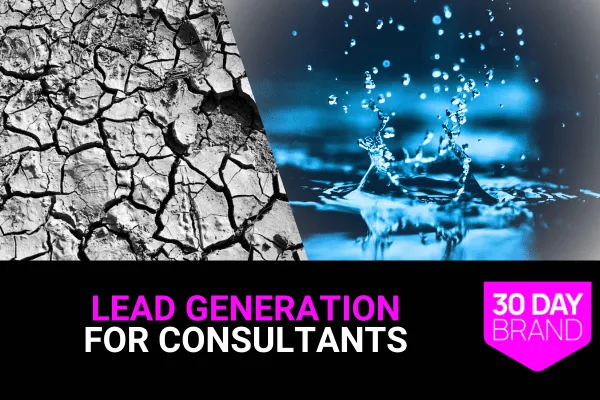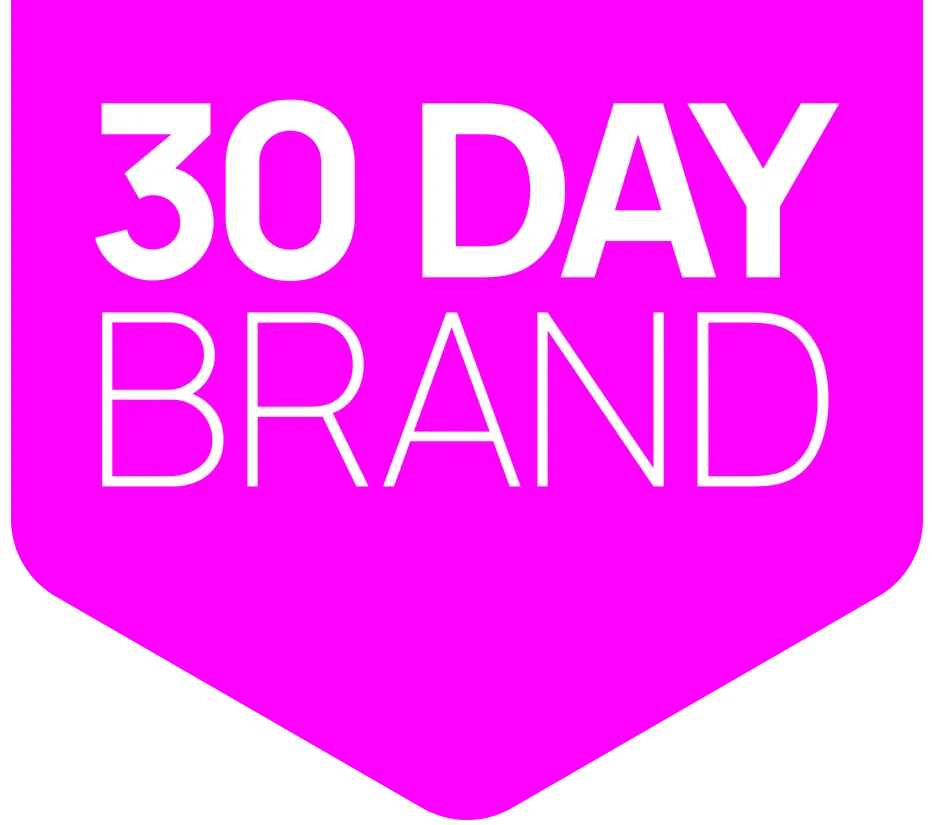
Lead Generation for Consultants: Building a Predictable Pipeline
Consulting Lead Generation Overview & Definition
What it is: A system that attracts, qualifies, and converts high-value consulting prospects. It replaces sporadic outreach with repeatable processes.
Why it matters: 67% of B2B buyers self-educate before sales contact (HubSpot, 2024). Visible expertise wins shortlists and drives pipeline.
Who needs this: Independent consultants and Founder-led B2B firms seeking predictable demand and fewer feast-or-famine cycles. See structure ideas in B2B Branding.
Consulting Lead Generation Best Practices: 12 Systems
Most firms use too few tactics. Combine these systems to build steady, high-quality flow.
Item 1: Systematic Referrals
Warm introductions convert fastest in consulting.
Definition: A managed program that activates clients and partners for steady introductions.
How to implement:
Time your asks after wins and outcomes.
Equip advocates with a short intro script.
Track sources and close rates in your CRM.
Thank referrers within 48 hours.
Expected result: Higher win rates on warm deals (Forrester, 2024).
Time required: 2 weeks to launch; ongoing.
Item 2: Authority Content Engine
Buyers shortlist experts who teach.
Definition: A publishing cadence that educates across the full journey.
How to implement:
Ship weekly how-tos and frameworks.
Show outcomes with numbers and screenshots.
Map content to awareness, consideration, decision.
Expected result: Content programs drive more qualified demand (CMI, 2024).
Time required: 4–6 weeks setup, ongoing. See B2B Brand Messaging.
Item 3: Strategic Networking
Relationships grow when targeted and intentional.
Definition: Planned engagements with decision-makers and referrers.
How to implement:
Pre-book meetings before events.
Lead with insight, not pitches.
Follow up fast with tailored assets.
Expected result: Improved opportunity access in complex deals (Gartner, 2024).
Time required: 2 weeks per event cycle.
Item 4: Research-Driven Cold Outreach
Cold works when personalized and useful.
Definition: Multi-touch email and LinkedIn sequences based on triggers.
How to implement:
Qualify accounts by fit and intent.
Reference events relevant to the prospect.
Offer value like an assessment or benchmark.
Expected result: Higher replies from relevance and intent (HubSpot, 2024).
Time required: 1–2 weeks to build lists and templates.
Item 5: Partner Channels
Partners extend reach and trust.
Definition: Referral and co-marketing with complementary providers.
How to implement:
Map your ecosystem and prioritize overlaps.
Define handoffs and SLAs clearly.
Co-create webinars and case content.
Expected result: Lower CAC with partner-sourced deals (Salesforce, 2024).
Time required: 4–8 weeks.
Item 6: Speaking & Thought Leadership
Stages compress trust.
Definition: Conference talks, webinars, and bylines that showcase expertise.
How to implement:
Pitch 3–5 abstracts each quarter.
Use panels to earn first appearances.
Repurpose talks into articles and clips.
Expected result: Thought leadership increases consideration and pricing power (Edelman, 2024).
Time required: 6–12 weeks per cycle.
Item 7: LinkedIn Optimization & Engagement
LinkedIn is the highest-quality B2B channel.
Definition: Profile, posting, and outreach that attract your ICP.
How to implement:
Headline formula: ICP + problem + outcome.
Post 3–5 times weekly with proofs.
Add 10–20 targeted connections weekly.
Expected result: Social proof lifts vendor trust (Edelman, 2024).
Time required: 2–3 weeks, then ongoing. See LinkedIn Marketing Strategy.
Item 8: Email Nurture System
Email sustains long cycles.
Definition: Automated welcomes and monthly insights that build credibility.
How to implement:
Launch a 5-email welcome flow.
Send monthly case studies and tips.
Segment lists by role and intent.
Expected result: CRM + automation improves pipeline health (Salesforce, 2024).
Time required: 3–4 weeks.
Item 9: SEO Pillars and Clusters
Buyers search before they shortlist.
Definition: Topic hubs that capture high-intent queries.
How to implement:
Build pillars for core services.
Add clusters for specific questions.
Refresh quarterly with new data.
Expected result: 53% traffic gains from consistent programs (CMI, 2024).
Time required: 6–10 weeks. See structures in B2B Branding.
Item 10: Webinars and Workshops
Teach live to pre-qualify.
Definition: Educational sessions that convert attention into meetings.
How to implement:
Pick three pains per quarter.
Promote multi-channel with partners.
Close with one clear next step.
Expected result: Education shortens cycles in complex B2B (Forrester, 2024).
Time required: 4–6 weeks.
Item 11: Case Studies and Proof
Proof wins committees.
Definition: Results packaged into short, quantified stories.
How to implement:
Use P-P-R: problem, process, results.
Add quotes under 25 words.
Place near CTAs on key pages.
Expected result: Evidence increases win rates (Gartner, 2023).
Time required: 2–3 weeks per case.
Item 12: Automation and Scoring
Systems beat hustle.
Definition: CRM, automation, and lead scoring to prioritize effort.
How to implement:
Score leads by fit, intent, and timing.
Automate handoffs and reminders.
Build dashboards for KPIs.
Expected result: 29% better close rates with CRM rigor (Salesforce, 2023).
Time required: 2–4 weeks.
Consulting Lead Generation Implementation Guide
Step 1: Define ICP and Offer Clarity
What to do: Document ideal accounts, roles, pains, and desired outcomes.
Tools needed: Business messaging framework, CRM fields, interview notes.
Time required: 1 week.
Expected result: Shared targeting rules.
Step 2: Stand Up Core Assets
What to do: Update pages, cases, and lead magnets.
Tools needed: CMS, design templates, forms.
Time required: 2 weeks.
Expected result: Conversion-ready site.
Step 3: Launch Two Inbound Engines
What to do: Start SEO pillars and a monthly webinar.
Tools needed: Keyword plan, webinar platform.
Time required: 3 weeks.
Expected result: Predictable inbound.
Step 4: Add One Outbound Engine
What to do: Build research-driven outreach sequences.
Tools needed: Prospecting list, email + LinkedIn plays.
Time required: 2 weeks.
Expected result: Meetings from target accounts.
Step 5: Activate Partners and Referrals
What to do: Formalize asks, SLAs, and co-marketing.
Tools needed: Partner one-pager, intro scripts.
Time required: 2–4 weeks.
Expected result: Lower-CAC pipeline.
Step 6: Automate, Score, and Report
What to do: Score leads, automate nurture, and track KPIs.
Tools needed: CRM, automation, dashboards.
Time required: 2 weeks.
Expected result: Focus on the best opportunities.
Metrics & Measurement for Consulting Lead Generation
Self-serve discovery: 67% of research pre-sales (HubSpot, 2024).
Brand strength → win rate: 31% higher win rates from clear positioning (Gartner, 2023).
Pricing power: 15–20% premiums for strong brands (McKinsey, 2023).
Data-driven ops: 67% higher ROI with data discipline (McKinsey, 2023).
Core KPIs: MQLs, SQLs, lead-to-client rate, pipeline value, win rate, cycle length.
FAQ: Consulting Lead Generation
How fast can results appear?
Answer: Expect 60–90 days for early signals. Larger gains land in 6–12 months (Forrester, 2024).
Which channels start fastest?
Answer: Referrals and webinars create near-term meetings. SEO compounds over quarters.
How many tactics should we run?
Answer: Five to seven well-run systems beat two big bets (Gartner, 2023).
Do small teams need a CRM?
Answer: Yes. CRM use lifts close rates 29% (Salesforce, 2023).
What content converts best?
Answer: Case studies near CTAs and framework guides at consideration (CMI, 2024).
Should we gate assets?
Answer: Gate deep assets. Keep primers open to grow reach (CMI, 2024).
How do we qualify faster?
Answer: Score fit, intent, and timing and route A-leads to calls.
Does thought leadership move deals?
Answer: Yes. Decision-makers assign more credibility to strong POVs (Edelman, 2024).
What reduces cycle time?
Answer: Education + proof across stages shortens cycles (Forrester, 2024).
How do we show ROI?
Answer: Tie meetings, pipeline, win rate, and deal size to each program.
Let’s Fill Your Pipeline: Next Steps
Stop chasing random leads. Build a client acquisition system that compounds.
Run the free Brand Message Audit and get a 3-minute plan to improve conversions.
👉 Run your audit










